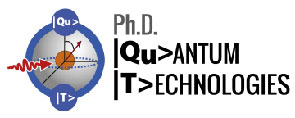Speaker
Description
Trace-gas detection plays an important role in our modern society, impacting sectors as energy production, environmental monitoring, transportation, agriculture, safety, and security. During the last decade, optical detection with ultra-high sensitivity, down to the ppq level, was demonstrated with cavity-ring down techniques [1], enabling laser sensors to enter areas as archaeology (radiocarbon dating), climate change monitoring, biofuel control, contaminant assessment for semiconductor industry and so on. More recently, photoacoustic sensors based on quartz tuning forks and silicon cantilever have shown great potential in achieving a sensitivity at the level of the techniques mentioned above, especially when combined with narrow-linewidth mid-infrared lasers and high-finesse optical cavities [2-5]. In addition, they have unique characteristics of robustness, wide dynamic range and compact size, which make them particularly attractive for in-field applications.
Here, the recent developments in photoacoustic sensing combined with resonant cavities are discussed, showing the potentiality of the technique towards sub-ppt trace-gas detection. The setup is based on a silicon cantilever as acoustic transducer, whose displacement is measured with a balanced Michelson interferometer. The cantilever is mounted in a home-made photoacoustic cell consisting of a high-Q-factor acoustic resonator placed inside a high-finesse optical resonator. This design, leveraging on a double standing wave effect, achieves a combined acoustic and optical amplification factor of several orders of magnitude with respect to the standard configuration, thus strongly enhancing the final detection sensitivity. For our proof-of-principle demonstration of the technique, a mid-infrared quantum cascade laser at 4.5 µm is used, addressing N2O rovibrational transitions.
References
[1] M.G. Delli Santi et al., “Biogenic Fraction Determination in Fuel Blends by Laser‐Based 14CO2 Detection”, Advanced Photonics Research 2, 2000069 (2021)
[2] G. Zhao et al., “High-resolution trace gas detection by sub-Doppler noise-immune cavity-enhanced optical heterodyne molecular spectrometry”, Opt. Express 27, 17940 (2019)
[3] S. Borri et al., “Intracavity quartz-enhanced photoacoustic sensor”, Appl. Phys. Lett. 104, 091114 (2014)
[4] Z. Wang et al., “Doubly resonant sub-ppt photoacoustic gas detection with eight decades dynamic range”,
DOI:10.21203/rs.3.rs-431688/v1 (2021, under review)
[5] T. Tomberg et al., “Sub-parts-per-trillion level sensitivity in trace gas detection by cantilever-enhanced photo-acoustic spectroscopy”, Sci. Rep. 8, 1848 (2018)

